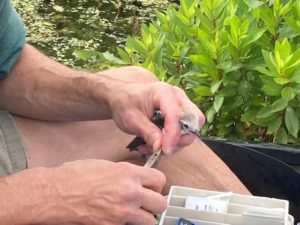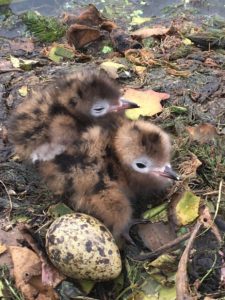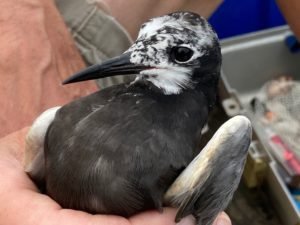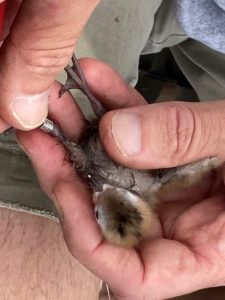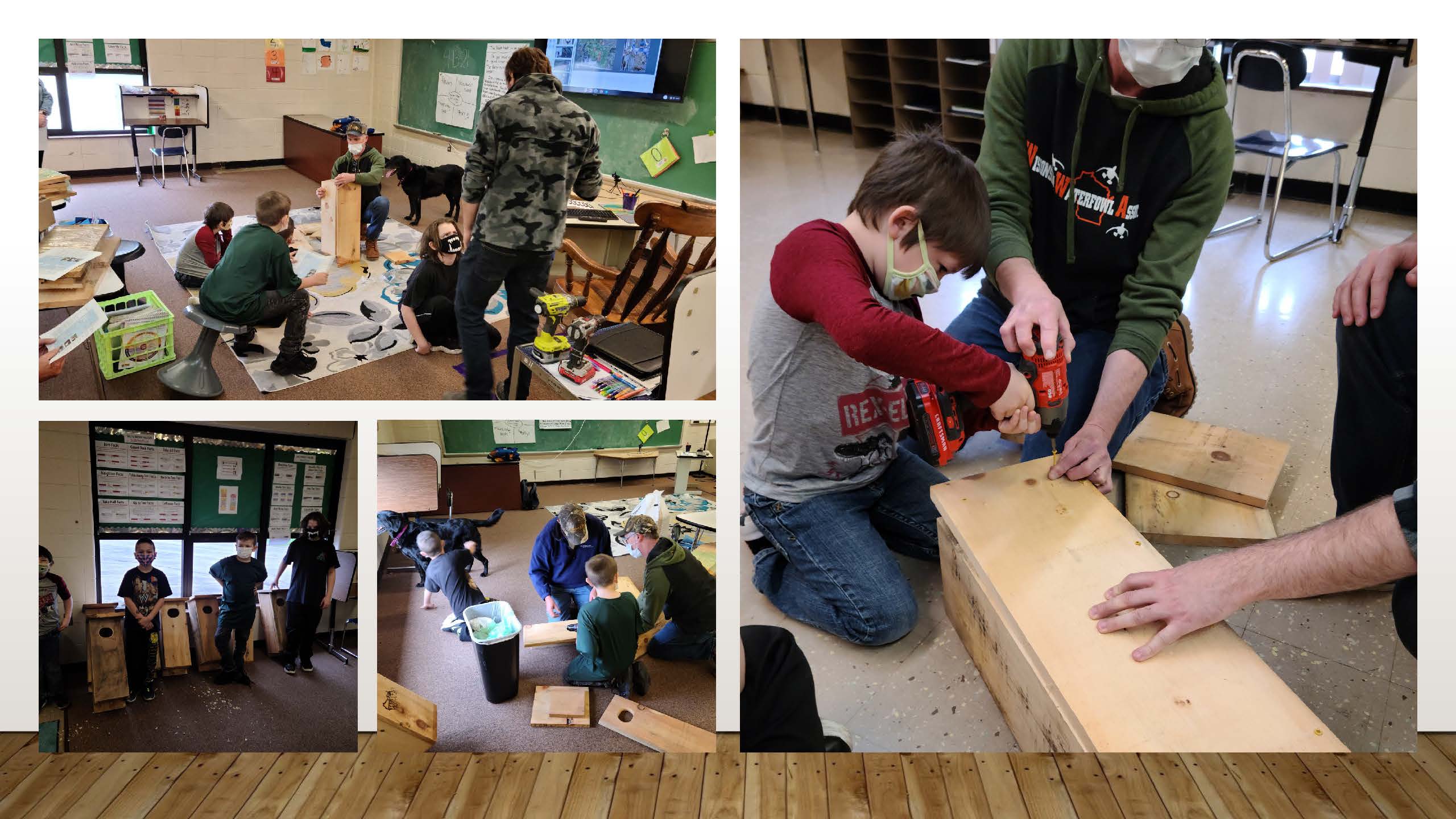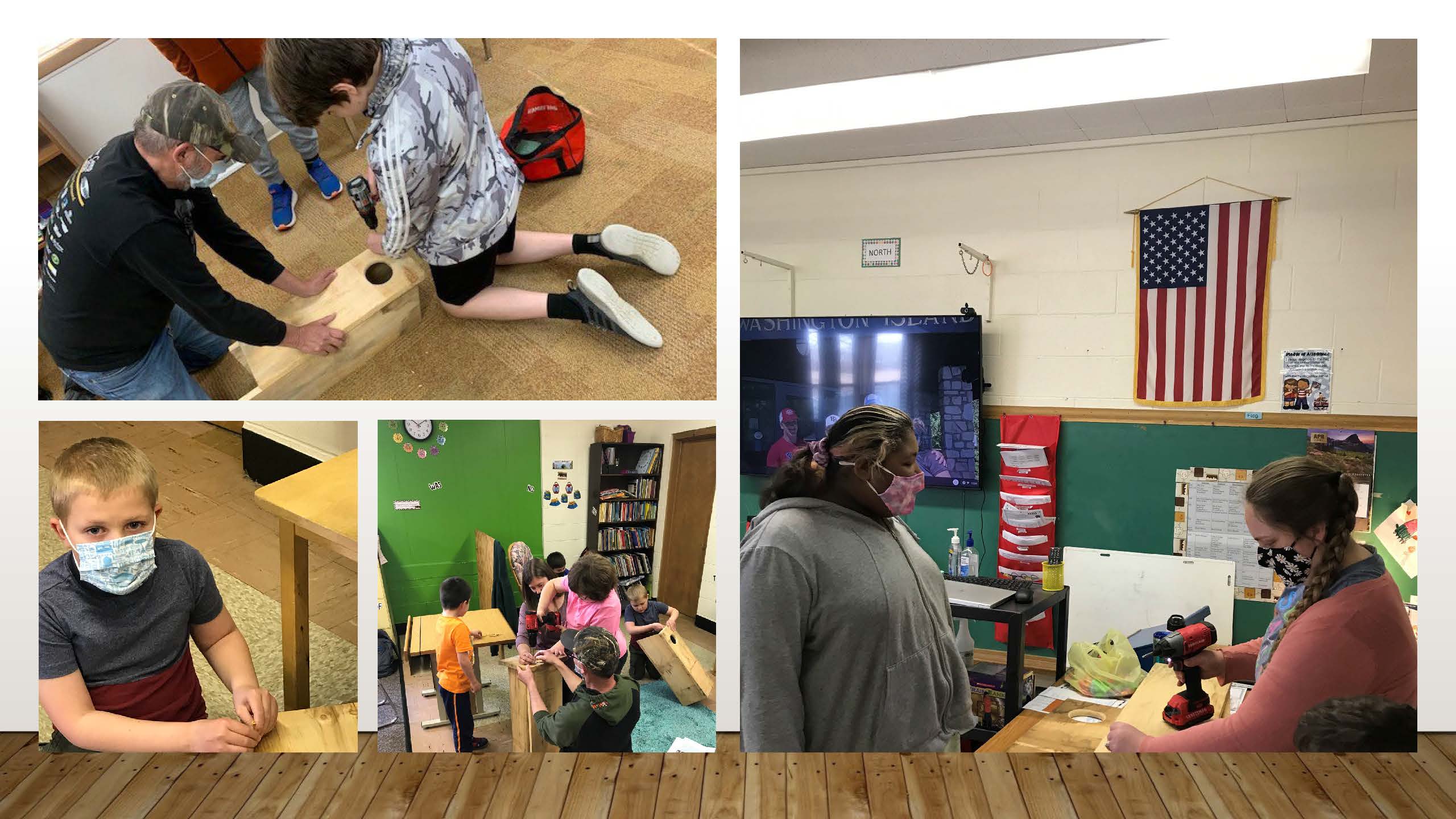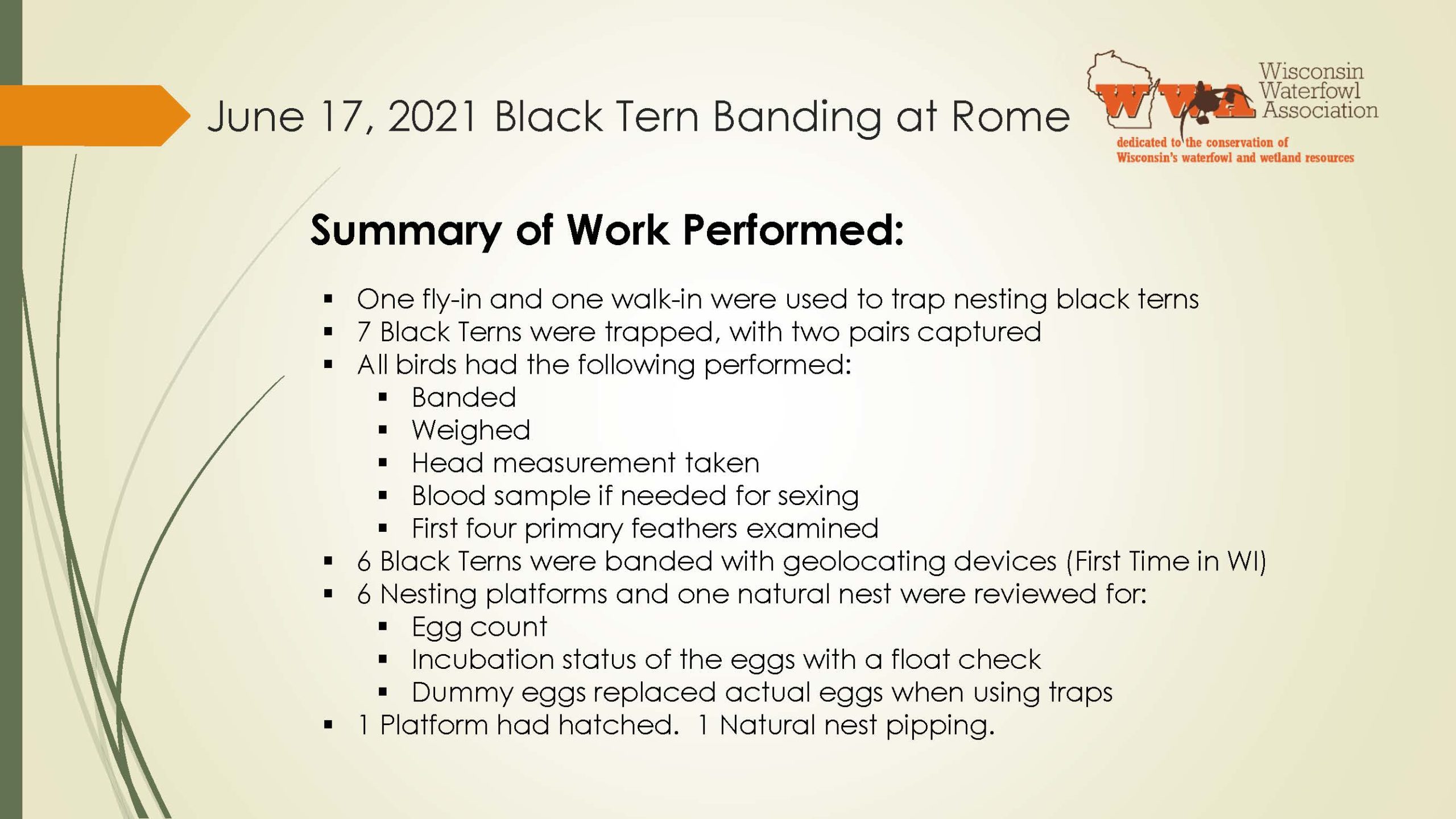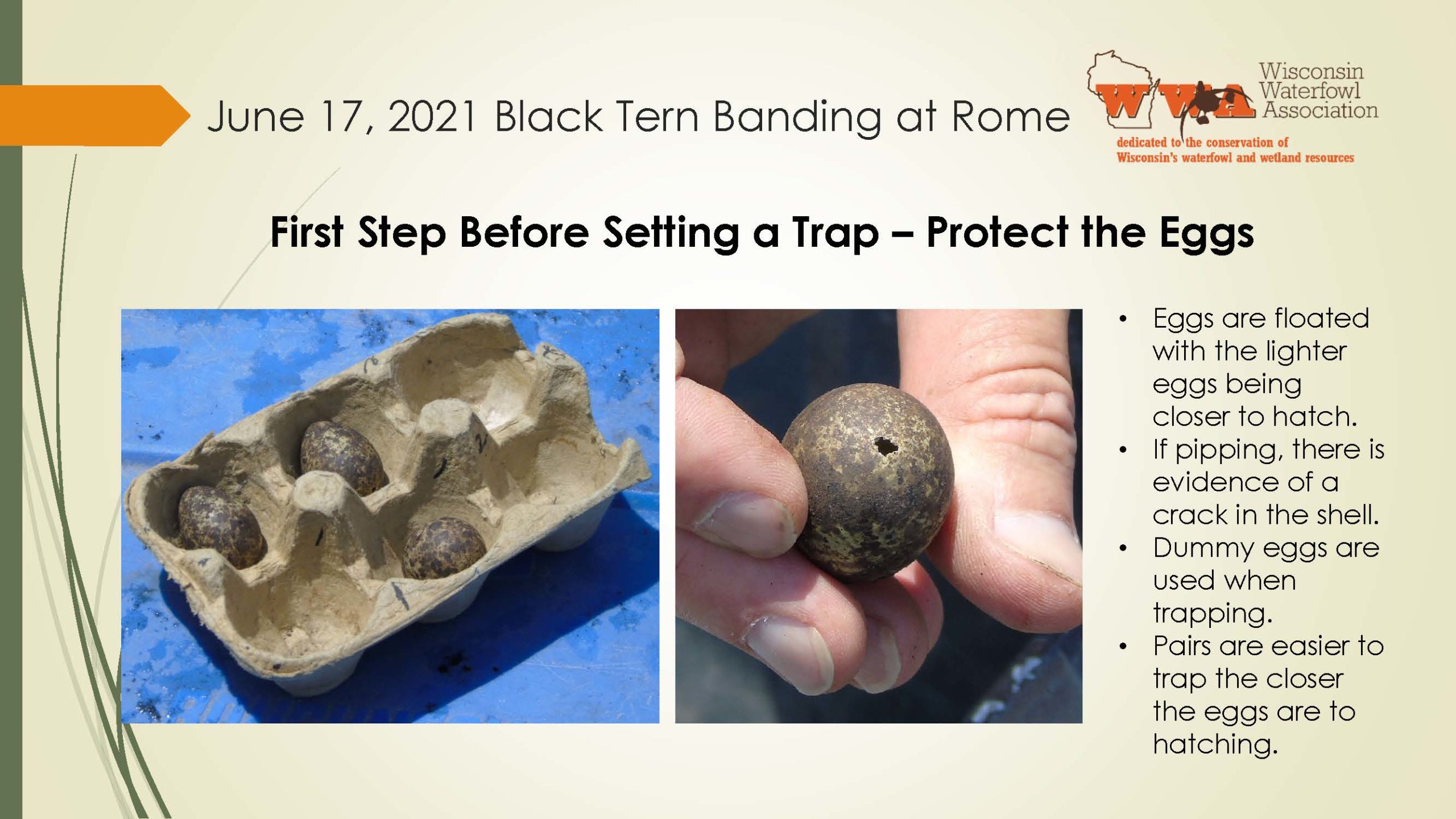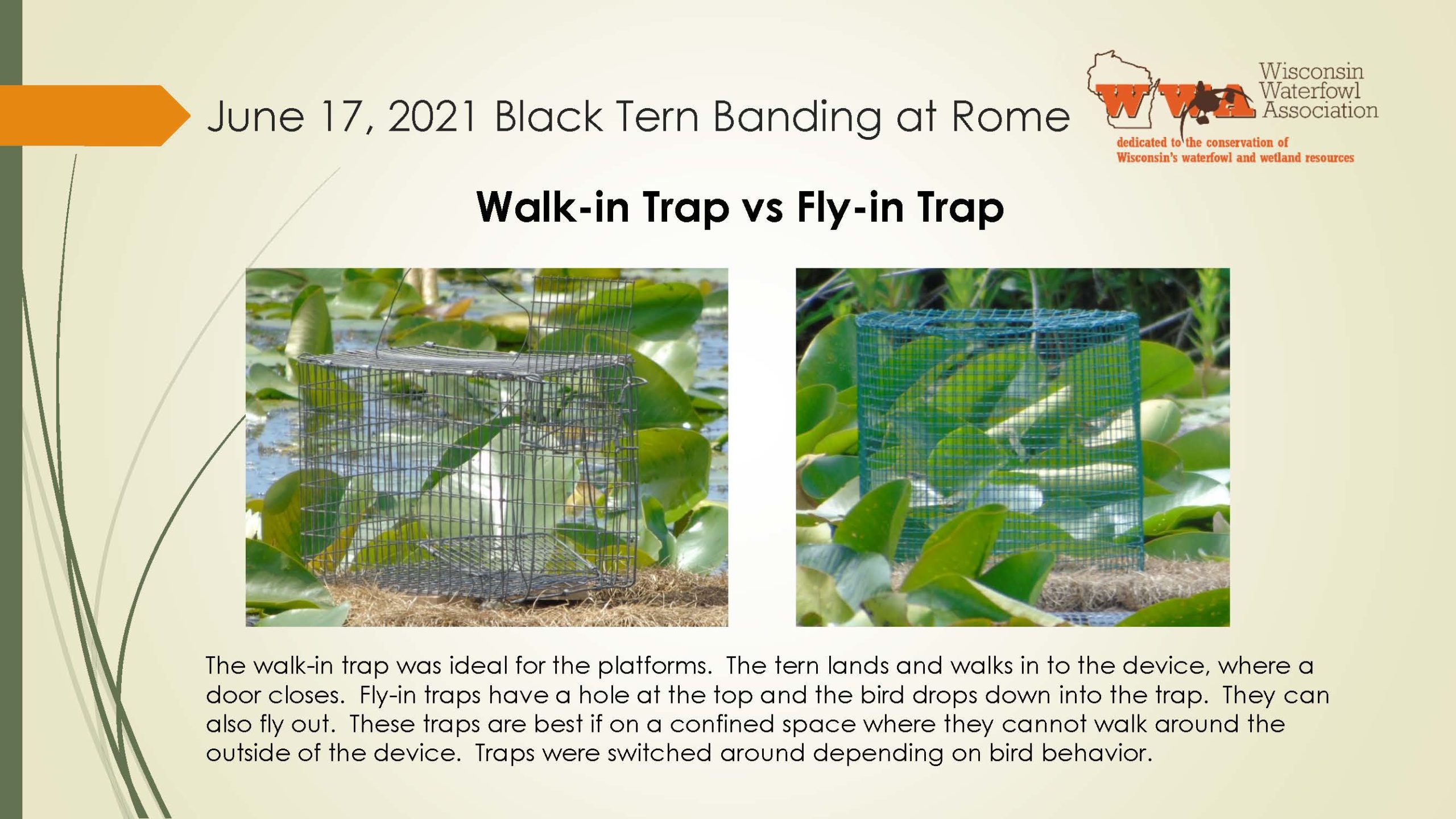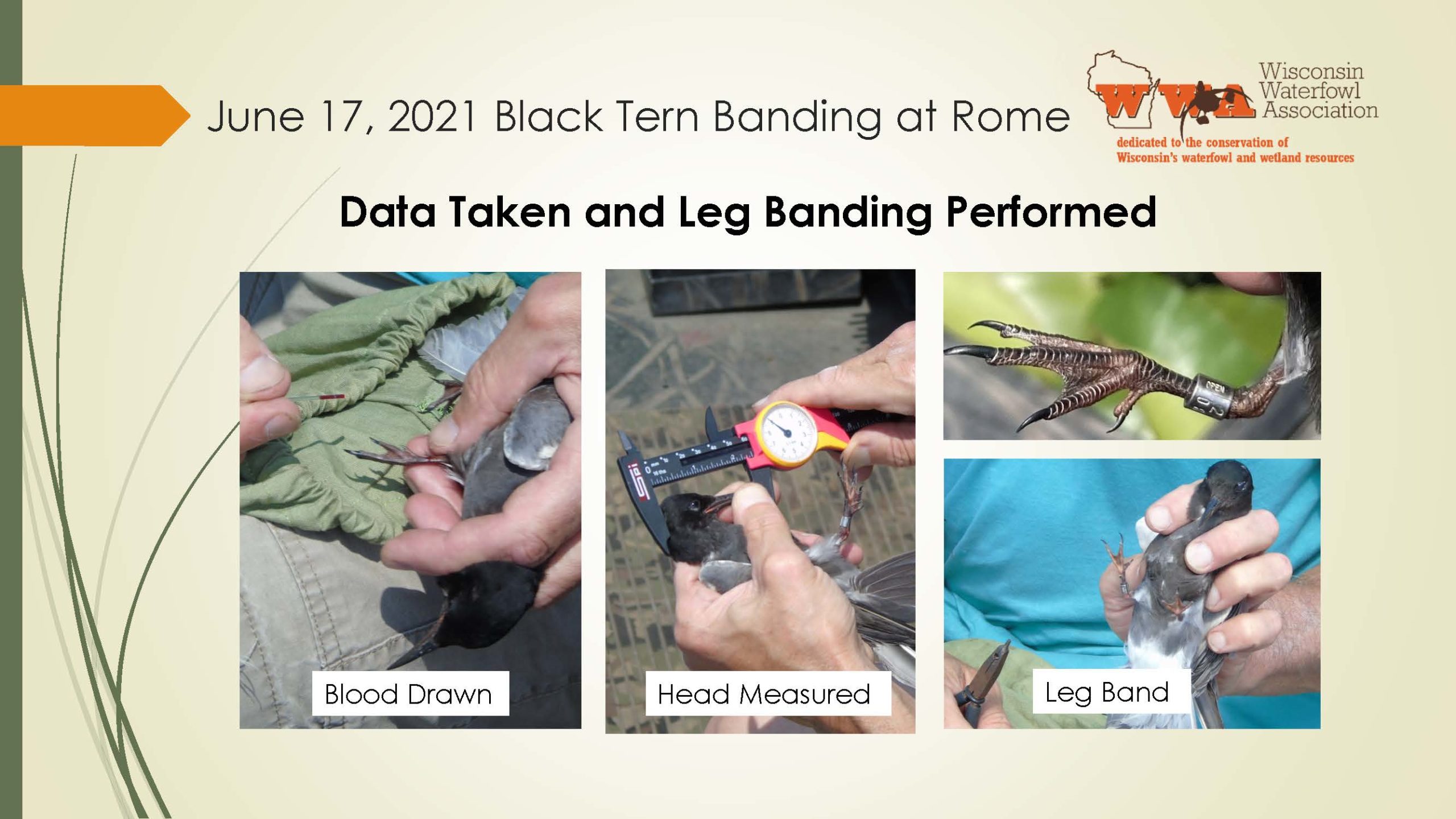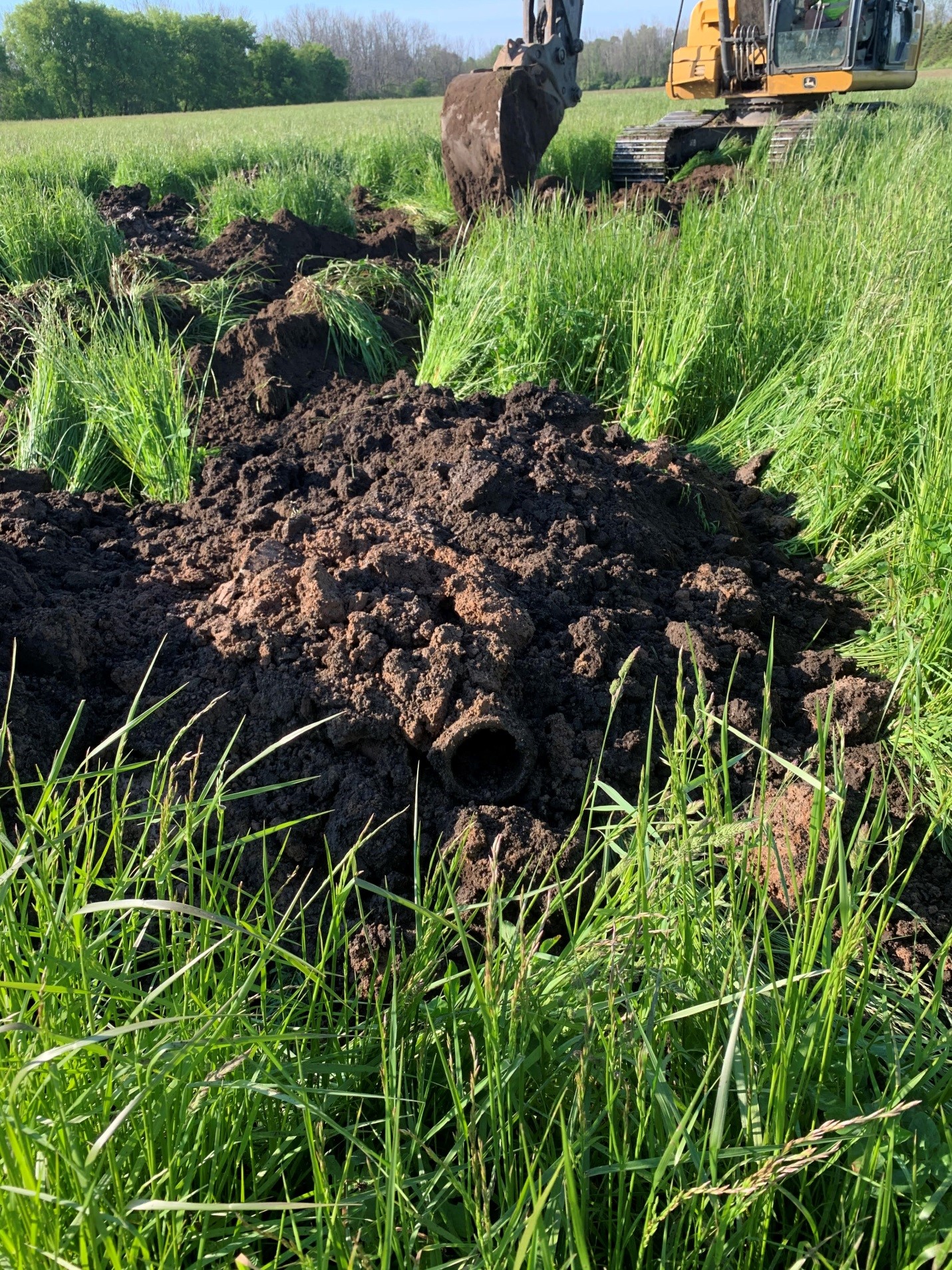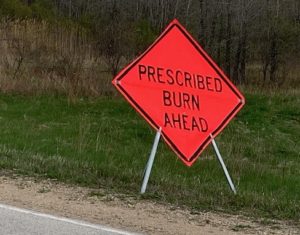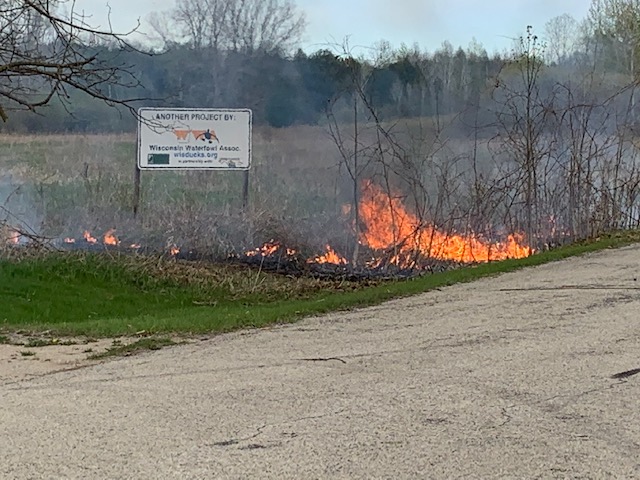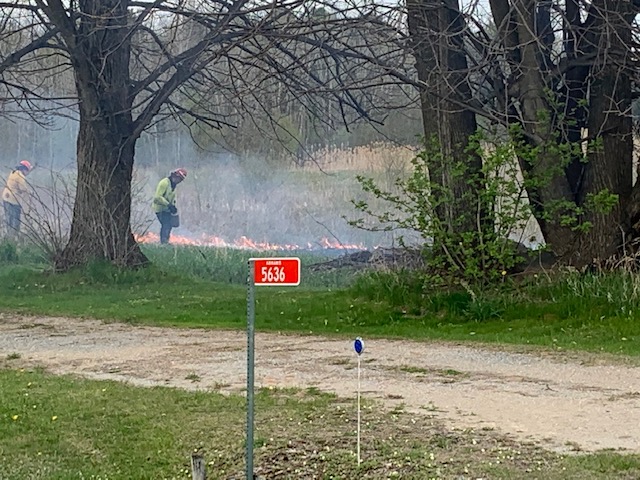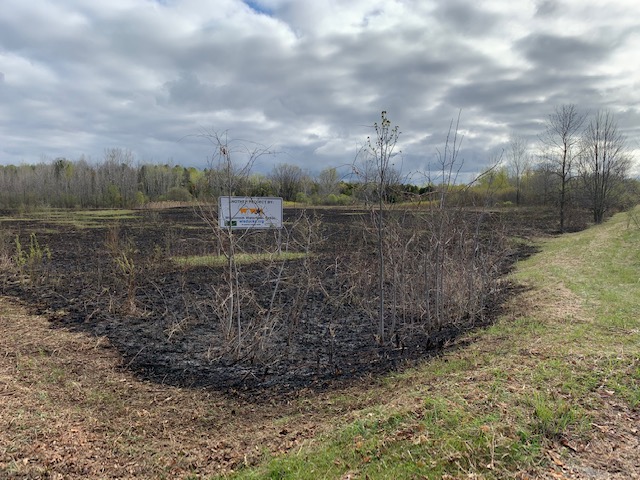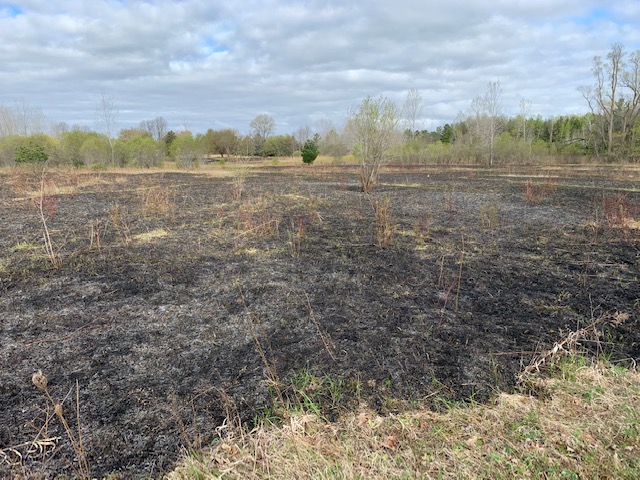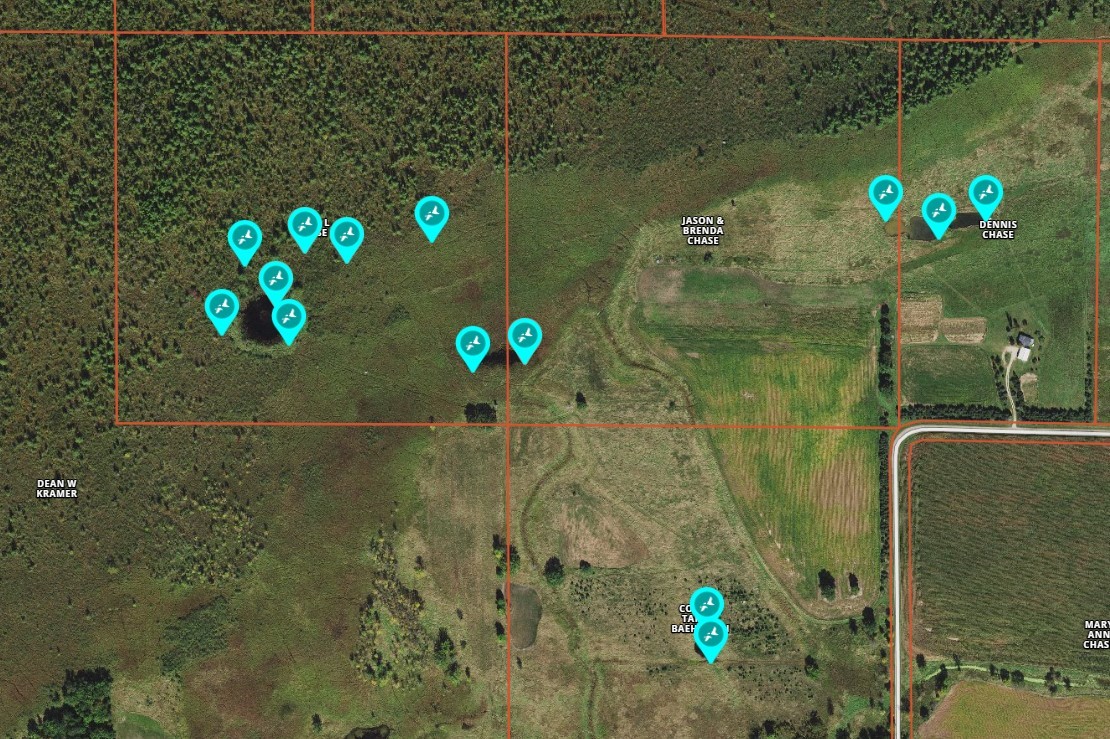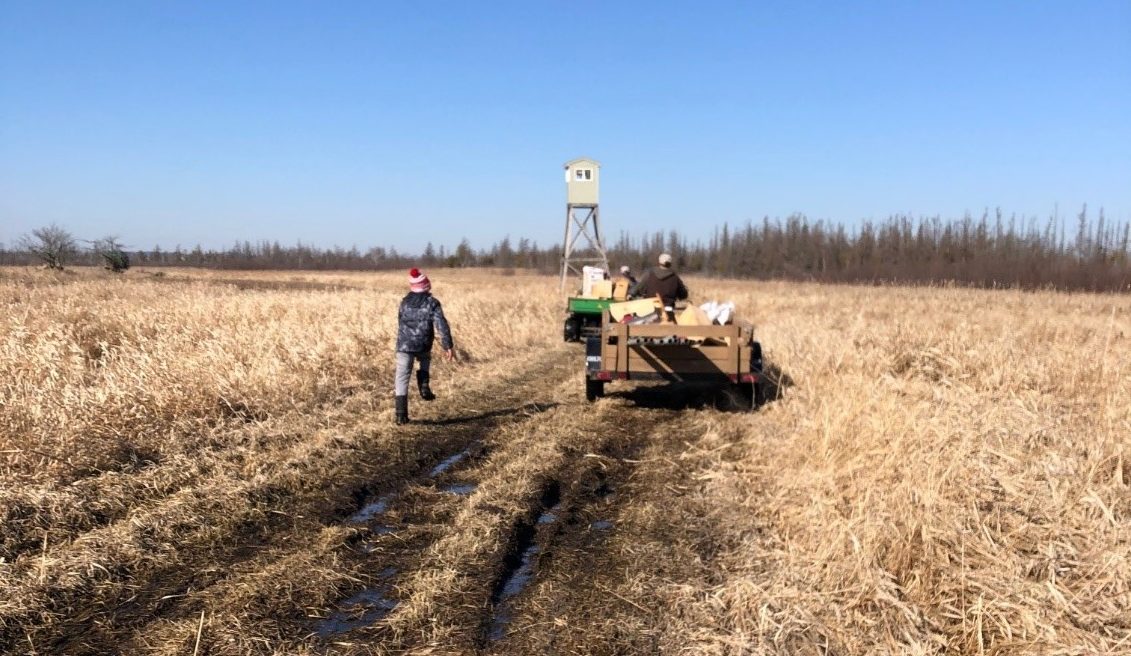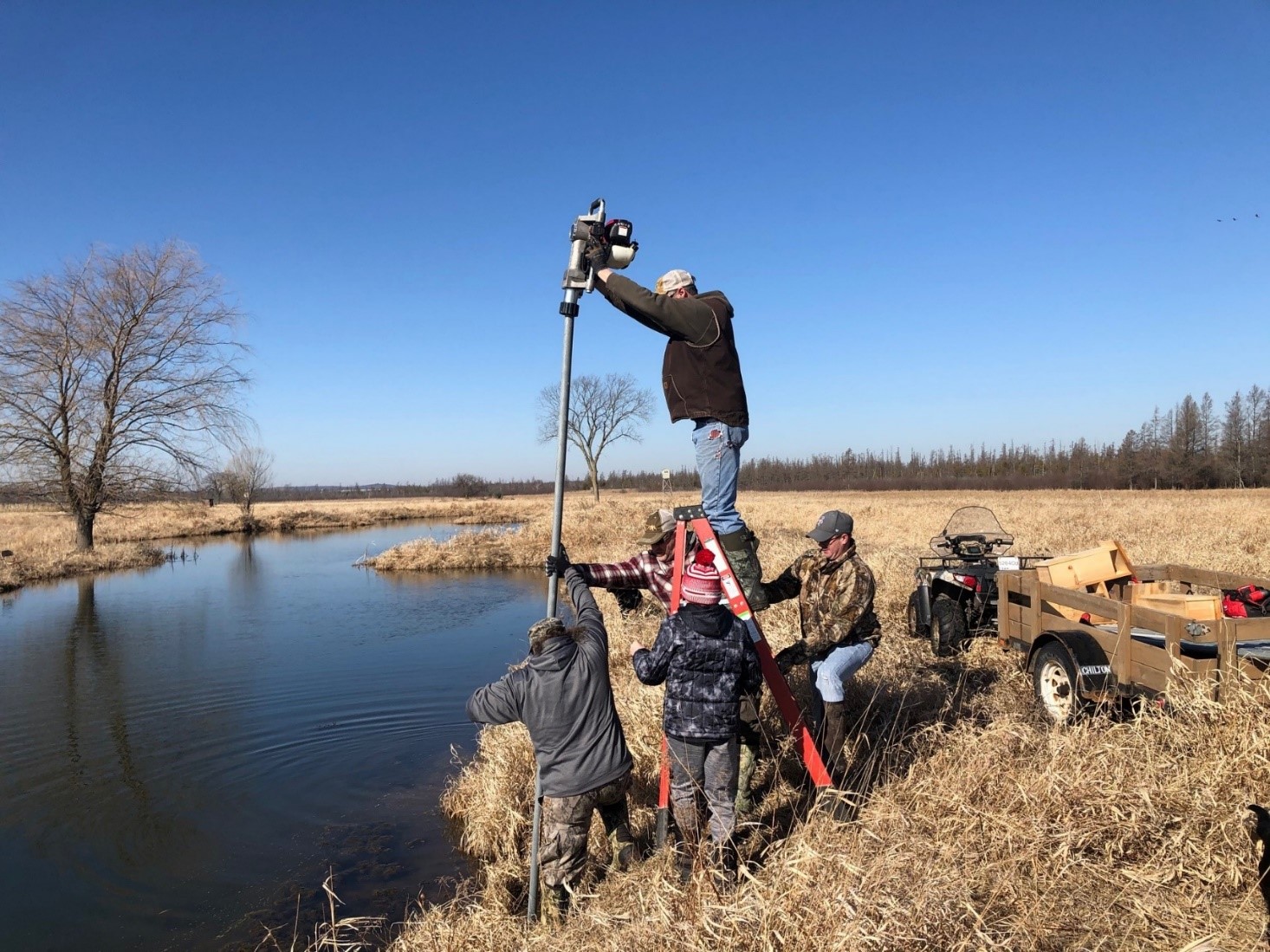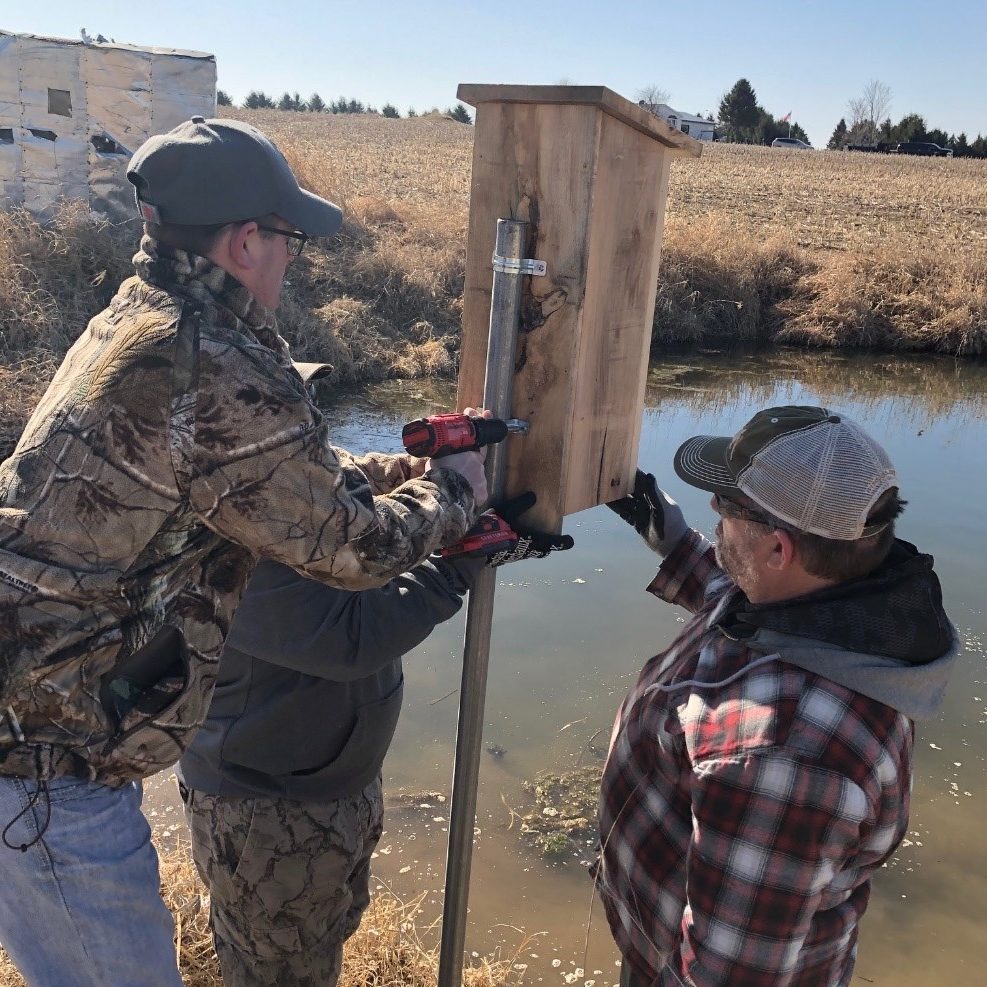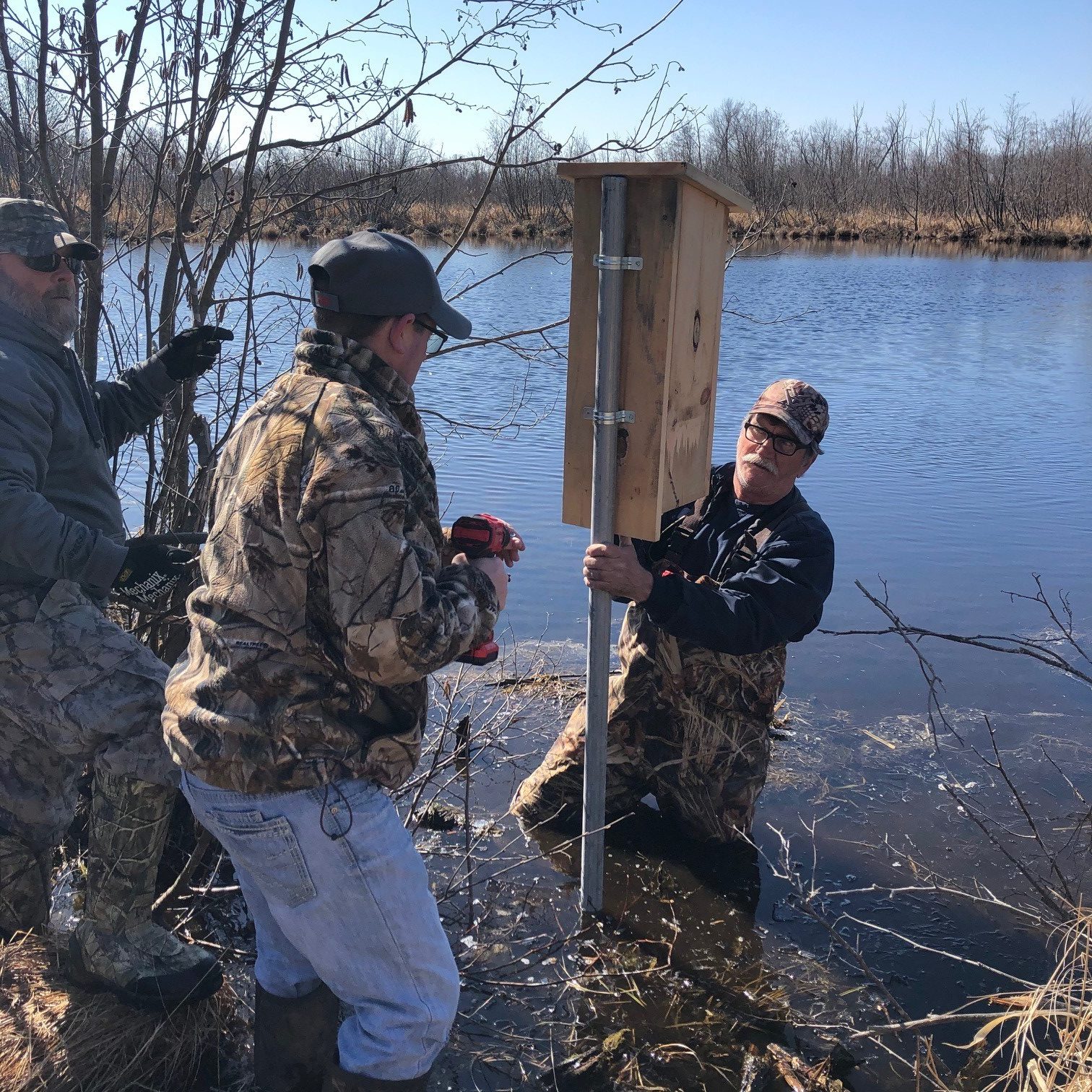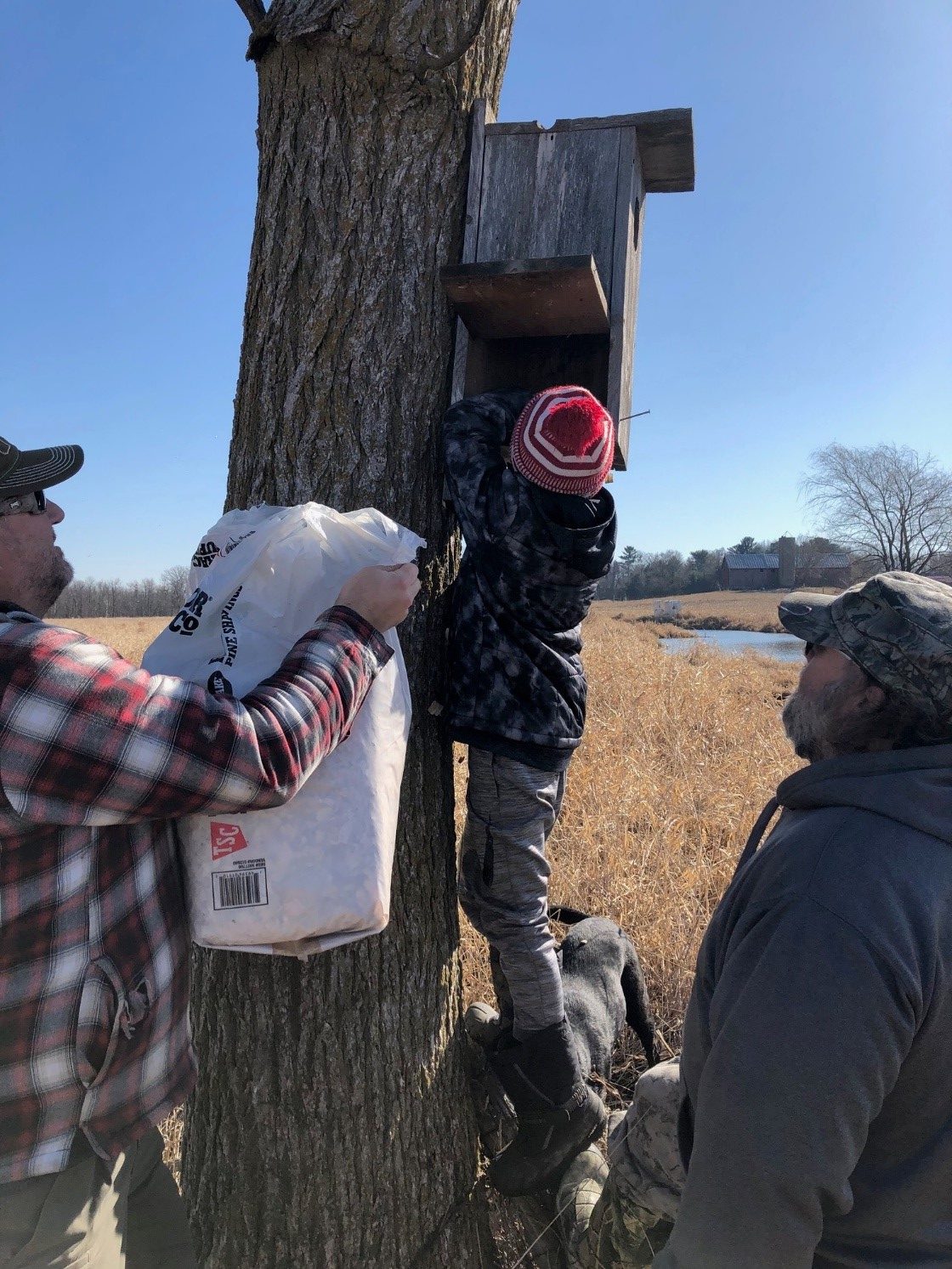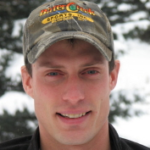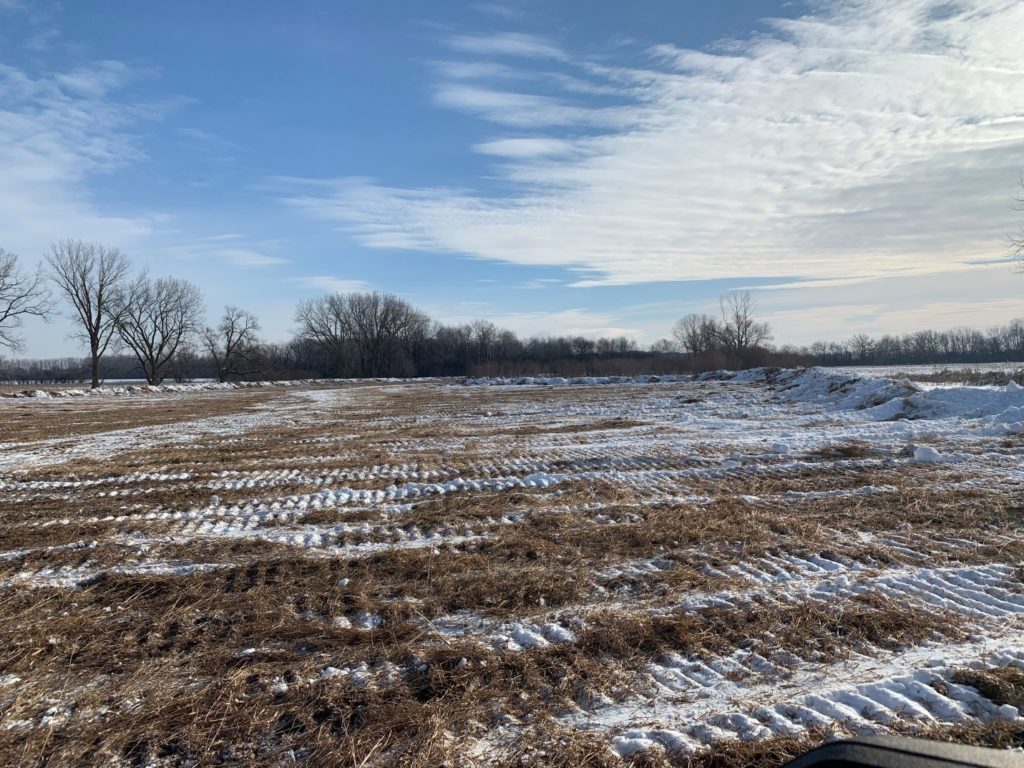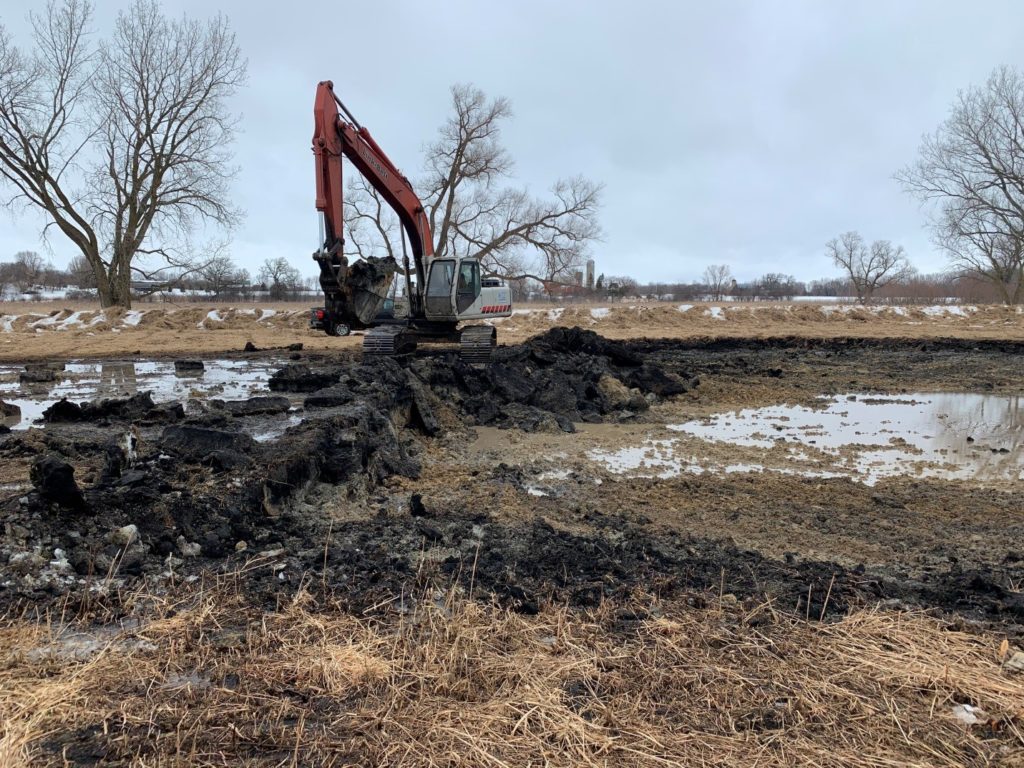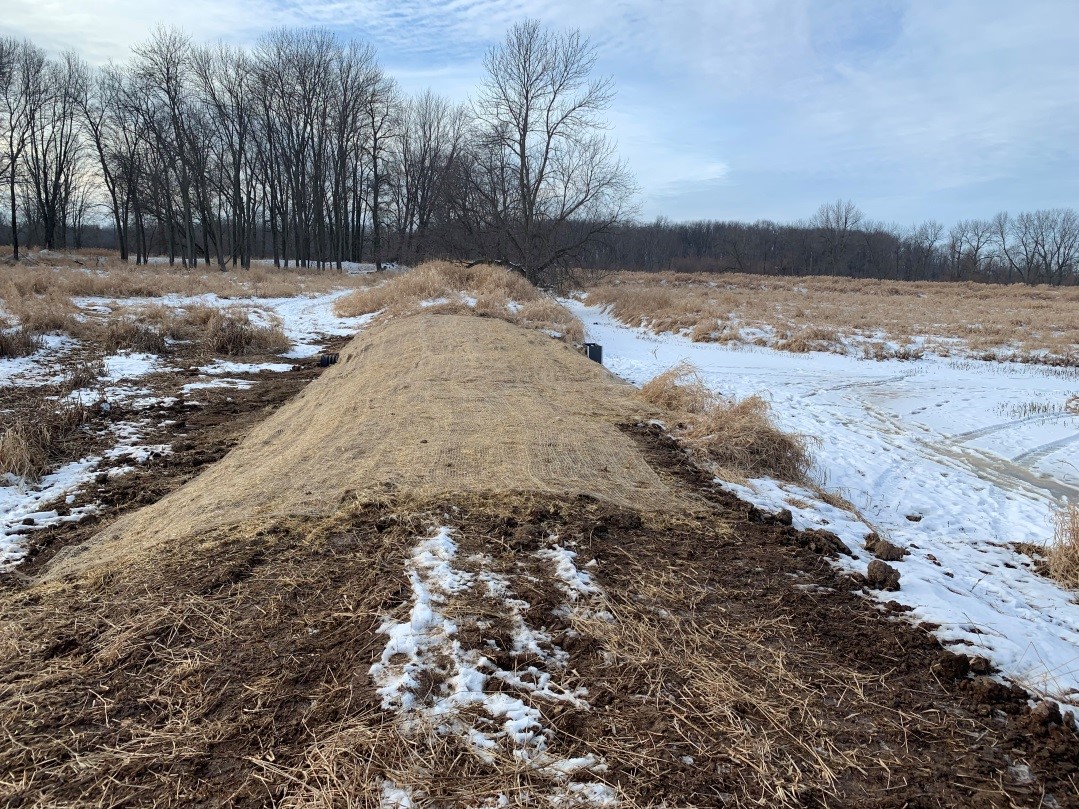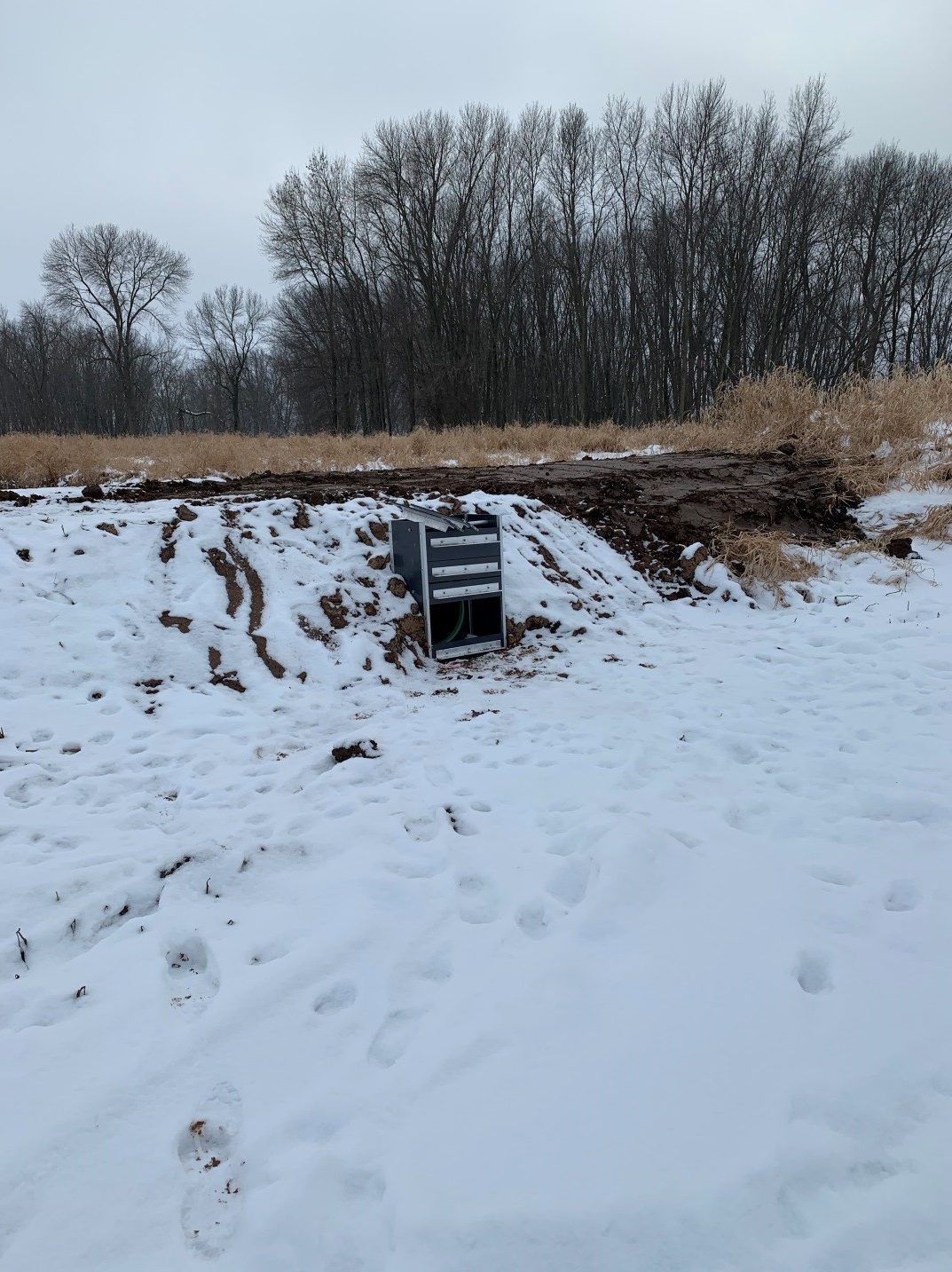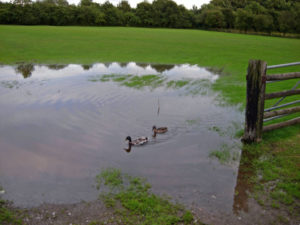Project: Rome Pond Wildlife Area
County: Waukesha
Project Start Date: 07/10/2021
Project End Date: 07/10/2021
In an update to last month’s black tern banding project, we’re excited to share the story and images of this historic banding project being done on WWA’s Adopt A Wildlife Area (AWA) project on Rome Pond Wildlife Area.
Another Amazing Day!
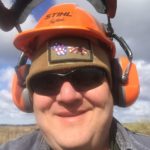 By Mike Alaimo, Lead AWA volunteer.
By Mike Alaimo, Lead AWA volunteer.
All photos courtesy Mike Alaimo unless otherwise noted.
As the season was wrapping up for the black terns on Rome, one last effort was made to deploy more geolocating tags. This task seemed impossible as the platforms were found to be bare and adults were heavily defending the areas where fledglings were present.
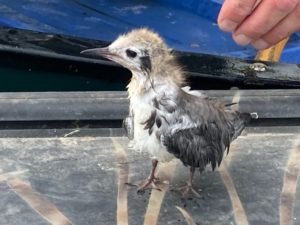 Our first leg band of the day resulted from a fledgling that had the necessary primaries, but still chose to cling to the lilies. Dr. David Shealer was able to capture the young tern. It was allowed to dry off on the seat of my boat, while adults dove down upon us looking and listening for it. After performing measurements and banding the fledgling, it was released back to the capture location.
Our first leg band of the day resulted from a fledgling that had the necessary primaries, but still chose to cling to the lilies. Dr. David Shealer was able to capture the young tern. It was allowed to dry off on the seat of my boat, while adults dove down upon us looking and listening for it. After performing measurements and banding the fledgling, it was released back to the capture location.
An exhaustive search was then conducted for natural nesting sites. Young terns were everywhere, in the air and hidden in the beds of lilies. Finally, by watching pair behavior, two natural nest sites were found.
A trap was set on one nest, when a molting male was found to have settled down on a small patch of floating peat near us. In awe, I watched a small chick squeeze out from under the breast of the male and stand next to the adult.
We pounced on the opportunity, and set a trap over the nest. Both chicks were captured, and a decoy egg was swapped with the near-to-hatching egg. The male was quickly trapped, measured, banded and tagged. Both chicks were also measured and banded, with weights that aged them at one day and less than a day old, respectively. The difference in weight already three grams between the two.
With mom unhappily hovering above us, attempts to trap her were abandoned. We tried finding more nests, but soon we headed to the launch.
What started out as a potential bust turned out to be extraordinary day. These birds are amazing and I am proud to be part of their lives, while continuing to bolster our education of their species.
Thanks to Mike and Dr. Shealer for this amazing project to help study endangered black terns. An update to Mike’s report published last month can also be viewed here.

